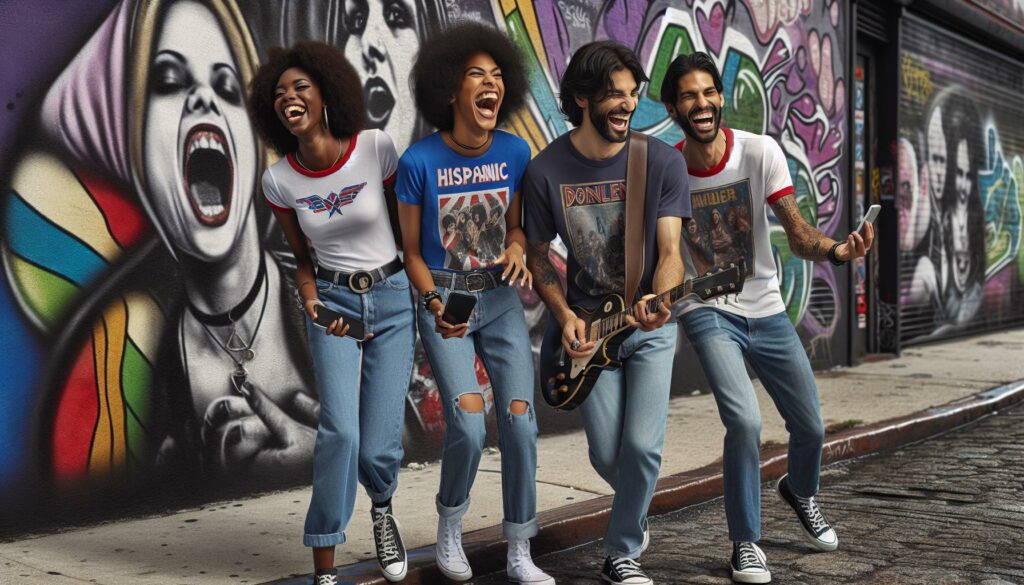What is yacht rock music? Yacht rock is more than just a genre; it’s a vibe that takes you straight to sun-soaked days and smooth sailing nights. Originating in the late ’70s and early ’80s, it blends soft rock with elements of jazz and R&B, creating a laid-back sound that feels effortlessly cool. Artists like Michael McDonald and Kenny Loggins defined this era, crafting melodies that still resonate today. I’ve always been captivated by the way yacht rock transports me to a carefree, breezy atmosphere. It’s the perfect soundtrack for chilling by the pool or cruising along the coast. Whether you’re a longtime fan or just discovering this musical treasure, yacht rock invites you to kick back, relax, and enjoy the smooth sounds that defined a generation.
- Definition of Yacht Rock: Yacht rock merges soft rock, jazz, and R&B, creating a smooth and laid-back sound that evokes coastal leisure and carefree vibes.
- Historical Origins: The genre emerged in the late ’70s and early ’80s, shaped by key influences from soft rock, jazz fusion, and the prominent music scene of that era.
- Distinct Characteristics: Notable features of yacht rock include polished production, intricate vocal harmonies, and themes that frequently explore love, escapism, and nostalgia.
- Iconic Artists: Renowned musicians such as Michael McDonald, Kenny Loggins, and Christopher Cross significantly contributed to the yacht rock sound, producing hits that remain popular today.
- Cultural Impact: Yacht rock not only defined the musical landscape of its time but also influenced lifestyle, fashion, and social behavior, becoming synonymous with leisure and relaxation.
- Resurgence and Legacy: The genre has witnessed a revival in the 2000s, continuing to inspire modern artists and resonating with new audiences through nostalgic playlists and social media sharing.
What Is Yacht Rock Music
Yacht rock music defines a genre that mixes soft rock, jazz, and R&B influences, creating a smooth, laid-back sound. This style emerged in the late ’70s and early ’80s, aiming to evoke the carefree atmosphere associated with sailing and coastal leisure. Key artists include Michael McDonald, Kenny Loggins, and Christopher Cross, whose work exemplifies this musical vibe.
Yacht rock tracks often feature rich harmonies, mellow melodies, and polished production techniques. Songs frequently explore themes of love, longing, and adventure, matching the soothing tones with lyrics that reflect simplified lifestyles and easy-going relationships. Iconic songs like “”Ride Like the Wind”” and “”What a Fool Believes”” showcase the genre’s characteristic blend of melodic hooks and smooth instrumentation.
The genre’s popularity saw a resurgence in the 2000s, fueled by nostalgic playlists and dedicated internet radio stations. Today’s listeners appreciate yacht rock not merely as music, but as a cultural experience. This genre represents an idyllic escape, bringing back memories of sunny days, calm seas, and relaxation.
The Origins of Yacht Rock
Yacht rock originated in the late ’70s and early ’80s, influenced by various musical styles and cultural trends. It represents a unique intersection of genres, creating a sound that’s both smooth and sophisticated.
Key Historical Influences
Key historical influences on yacht rock include the soft rock movement, jazz fusion, and R&B elements. Artists blended catchy melodies with relaxed instrumentation, often featuring intricate vocal harmonies. Producers like Bill Schnee played a vital role in shaping the polished sound that defined the genre. This fusion expanded the appeal of yacht rock, making it acceptable for mainstream radio while maintaining an air of exclusivity and coolness.
The 1970s Music Scene
The 1970s music scene was pivotal for yacht rock’s formation. With the rise of soft rock, artists like Fleetwood Mac and The Eagles paved the way for smooth sounds. Concurrently, the jazz fusion genre introduced complex arrangements and musicianship. These developments created fertile ground for yacht rock, allowing artists such as Kenny Loggins and Michael McDonald to thrive. They produced hit songs that blended storytelling with refined production techniques, encapsulating the carefree spirit of the era.
Characteristics of Yacht Rock
Yacht rock’s distinct features create a unique listening experience. This genre stands out due to its smooth instrumentation and reflective themes.
Instrumentation and Sound
Instrumentation in yacht rock incorporates a blend of soft rock, jazz, and R&B elements. Instruments like electric piano, smooth guitar, and light percussion dominate the sound. Producers prioritize polished production techniques, giving each track a glossy quality that enhances its laid-back vibe. The musicians expertly use layers of harmonies and melodic hooks, crafting memorable choruses that resonate deeply. Artists such as Michael McDonald and Kenny Loggins exemplify this instrumentation, using vocal harmonies to create a warm, inviting atmosphere.
Themes and Lyrics
Themes in yacht rock often revolve around love, escapism, and introspection. Lyrics frequently explore nostalgic emotions, reflecting on relationships and adventures. Many songs capture the longing for carefree moments, effectively evoking imagery of sailing and sunset beaches. Tracks like “”What a Fool Believes”” and “”Sailing”” showcase this lyrical depth, painting vivid pictures of yearning and hope. Such themes resonate with listeners, enhancing the genre’s ability to transport them to serene environments where life’s worries fade away.
Notable Yacht Rock Artists
Yacht rock features a diverse range of artists and bands, each contributing to the genre’s distinct sound and vibe. Below are some key contributors, along with their influential tracks.
Key Bands and Individual Artists
- Michael McDonald: Renowned for his smooth vocals and intricate harmonies, McDonald gained fame through his work with the Doobie Brothers and his solo career. His songs like “”What a Fool Believes”” exemplify his style.
- Kenny Loggins: Known for his catchy melodies and emotive lyrics, Loggins produced several hits that define yacht rock, including “”This Is It”” and “”Danger Zone.””
- Christopher Cross: He burst onto the scene with his self-titled album, featuring the Grammy-winning track “”Sailing.”” His soft sound captures the essence of the genre.
- Hall & Oates: This duo blended rock and soul effectively, creating iconic tracks like “”Kiss on My List”” and “”Rich Girl”” that resonate with yacht rock’s smooth aesthetic.
- Fleetwood Mac: A pivotal band in the yacht rock movement, tracks like “”Dreams”” showcase layered harmonies and polished instrumentation that characterize the genre.
- Steely Dan: Known for their sophisticated sound and complex arrangements, Steely Dan’s songs often touch on themes of love and longing, as evidenced in tracks like “”Reelin’ in the Years.””
| Song Title | Artist | Year Released |
|---|---|---|
| “”What a Fool Believes”” | Michael McDonald | 1978 |
| “”Sailing”” | Christopher Cross | 1979 |
| “”This Is It”” | Kenny Loggins | 1979 |
| “”Kiss on My List”” | Hall & Oates | 1981 |
| “”Dreams”” | Fleetwood Mac | 1977 |
| “”Reelin’ in the Years”” | Steely Dan | 1972 |
These artists and their songs embody the yacht rock experience, enveloping listeners in a world of smooth melodies and reflective lyrics.
The Cultural Impact of Yacht Rock
So, what is yacht rock music? Yacht rock significantly shaped the cultural landscape of the late ’70s and ’80s. It emerged as a soundtrack to a lifestyle characterized by leisure, affluence, and relaxation. This genre not only defined musical trends but also influenced fashion and social behavior. The distinct sound of yacht rock became synonymous with the yacht-owning lifestyle, where smooth tunes accompanied sun-soaked afternoons.
Yacht rock’s cultural significance extends beyond music. It played a vital role in establishing the adult contemporary genre, appealing to listeners seeking a polished sound that resonated with their sophisticated tastes. The crossover appeal of artists such as Michael McDonald and Kenny Loggins allowed yacht rock to penetrate mainstream channels, making it a staple on radio playlists. Its themes of escapism mirrored societal desires for relaxation and tranquility, especially during times of upheaval.
The resurgence of yacht rock in the 2000s highlighted its lasting cultural relevance. Nostalgic playlists and internet radio stations dedicated to this genre revived interest among younger generations. Events like yacht rock-themed parties and tribute bands further solidified its status as a beloved cultural phenomenon. Social media platforms also played a critical role, allowing fans to share their love and personal connections to yacht rock, thus expanding its reach.
Yacht rock’s influence persists today, with modern artists incorporating its sound and aesthetic into their music. Contemporary musicians like John Mayer and Justin Timberlake draw inspiration from yacht rock’s smooth melodies and reflective lyrics. This ongoing impact underscores the genre’s timeless appeal, reinforcing its place in the cultural tapestry. Its ability to evoke feelings of nostalgia and serenity ensures that yacht rock continues to sail smoothly through the currents of popular music.
Yacht rock is more than just a genre; it’s a feeling that captures the essence of carefree living. Its smooth melodies and rich harmonies transport me to sun-soaked days and tranquil nights. The nostalgia it evokes is powerful and connects generations through its timeless themes of love and adventure. I appreciate how yacht rock artists have shaped a unique sound that still resonates today. As I listen to classics from Michael McDonald and Kenny Loggins, I can’t help but feel a sense of relaxation and joy. This genre will always hold a special place in my heart and playlists, reminding me to embrace life’s simple pleasures.



